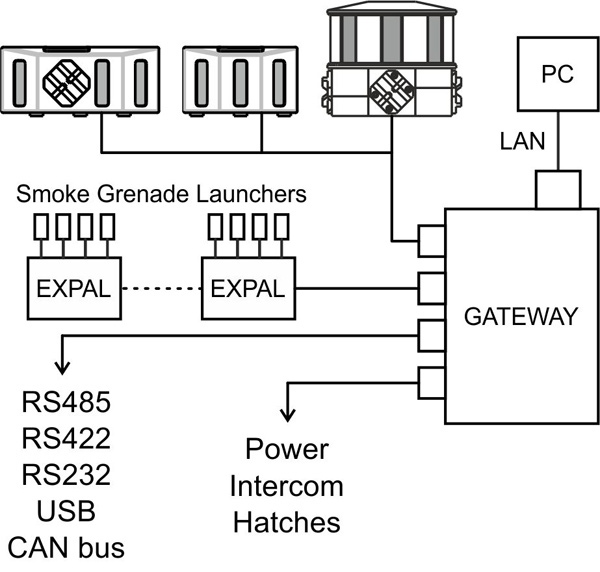
|
Laser Technology - Defence and Security Applications |
|
| PRODUCTS | SERVICES | ABOUT US | EVENTS | CONTACT |
|
|
||
|
The LAWAREC GATEWAY is a modular system of detection and identification of radiation for protection against weapon systems with laser or radar assistance, which allows to reliably detect threats of a mobile or stationary object.
USE AND DESCRIPTION: The LAWAREC GATEWAY is a modular system of detection and identification of radiation for protection against weapon systems with laser or radar assistance, which allows to reliably detect threats of a mobile or stationary object. System status, information about current threats and system control panels are indicated on the display modules of the master on-board computer. The core of the system is the LW GATEWAY control unit, which communicates with all variants of detector assemblies on the input side and with the master on-board computer on the output side. The control unit can also be connected with necessary number of ExPal modules for management of smoke grenades launchers activities. On the input side, all types of detector modules in any combination can be connected via the neural network universal bus:
On the input side also the following modules can be connected to a separate neural bus:
On the output side, the following communication interfaces are available for communication with the master computer:
The standard communication protocol is included. In order to ensure the customer's operational requirements, it is possible to adapt the communication protocol according to his needs. |
|
|
||
|
FUNCTIONS OF THE CONTROL UNIT: The control unit receives information from a central detection head or a chain of detection modules through a neural network, evaluates this information and provides comprehensive information to the master on-board computer about the direction and type of threat. Optionally, it also provides information about the activity of its own lasers (so-called "blocking"). The unit provides the information about the current threat also in the form of phonetic sound output to the vehicle intercom (any language mutation can be implemented). The control unit also evaluates and provides information on the state of smoke grenade launchers and after the command from the master on-board computer, controls firing smoke grenades through ExPal modules, while monitors the closing-opening of hatches and scuttles of the military vehicle to ensure crew safety against accidental or unintentional firing of smoke grenades. The basic functions of the control unit include:
The warm-up time is max. 4 seconds. Maximum number of simultaneously detectable threats equals the total number of detectors in the actually used detection modules. The laser detector modules recognize not only the direct but also the reflected beam. The laser and radar detector modules are hermetically sealed for moisture protection and are filled with dry nitrogen to provide a protective atmosphere for the internal environment. Modules contain moisture, temperature and pressure sensors to monitor their status. All variants of detection modules consist of various combinations of laser and radar detectors.
|
|
|


 download pdf
download pdf